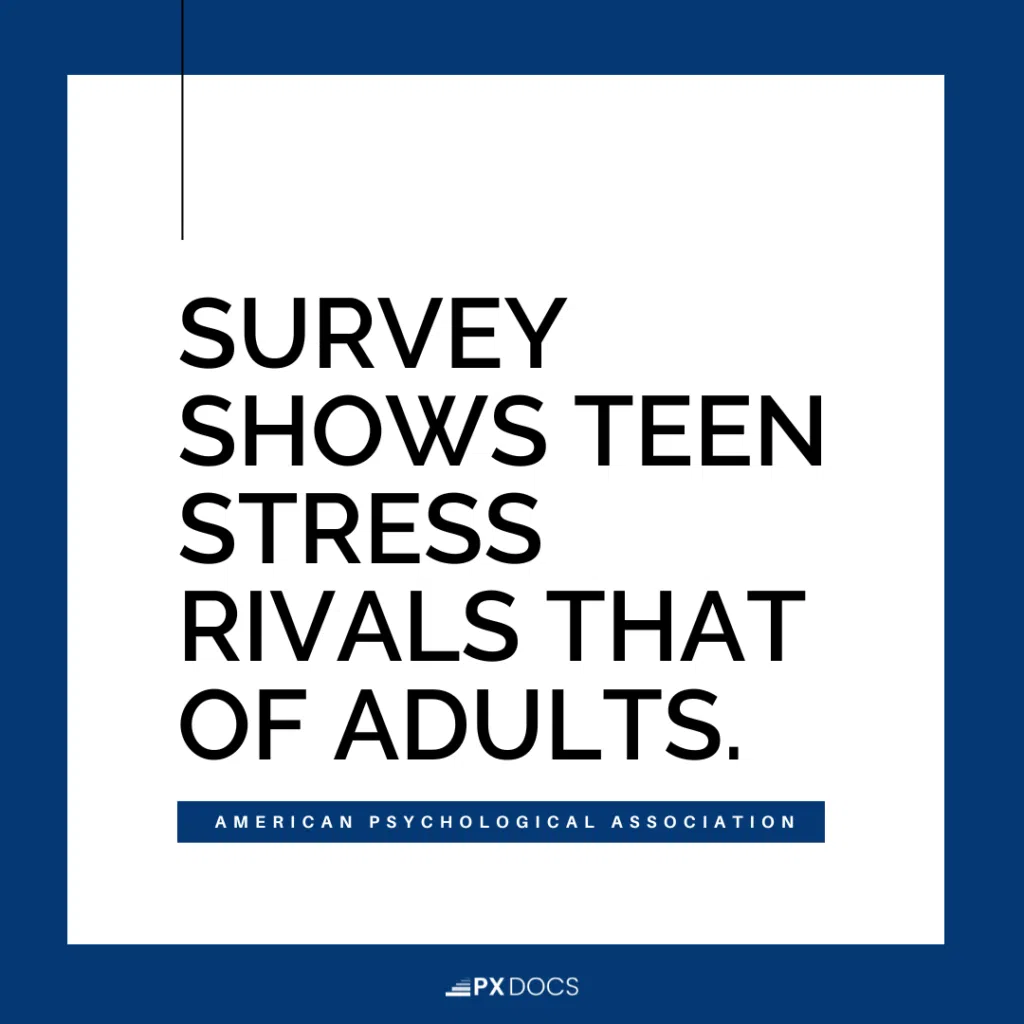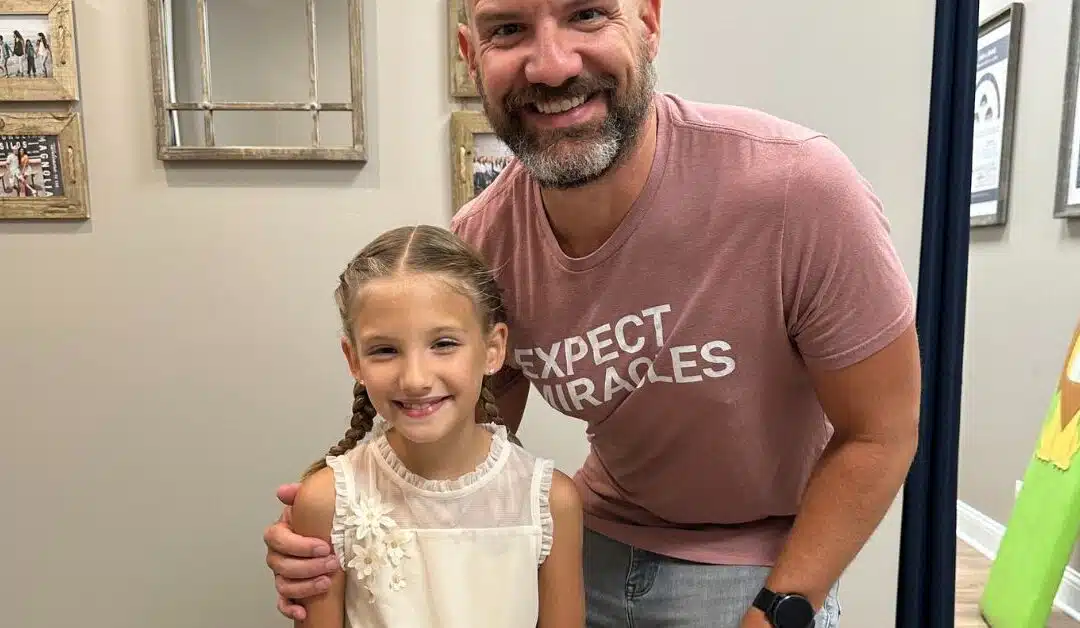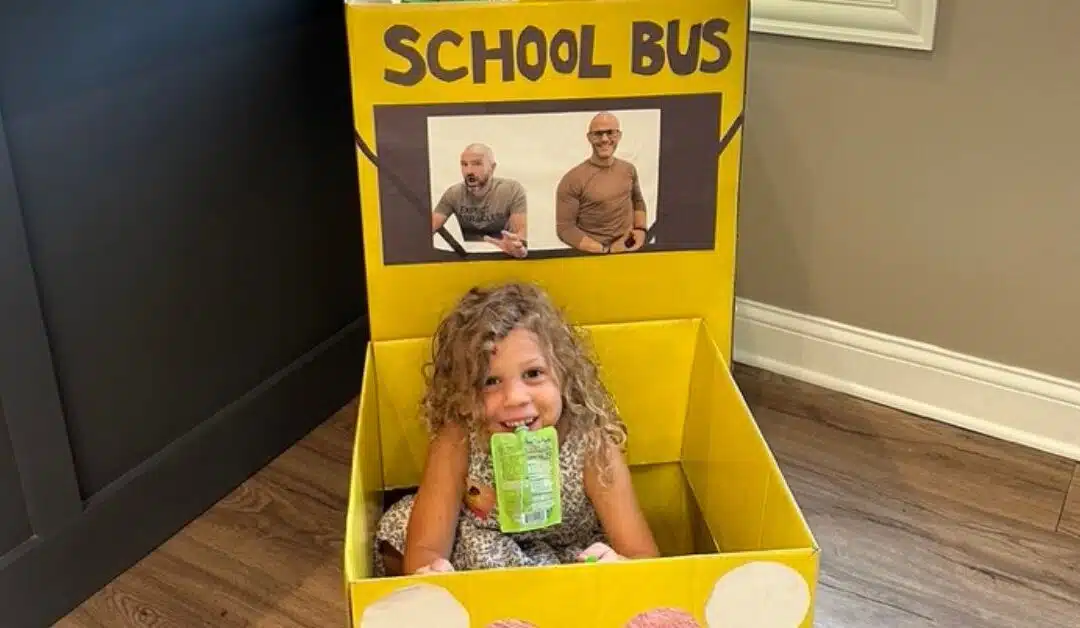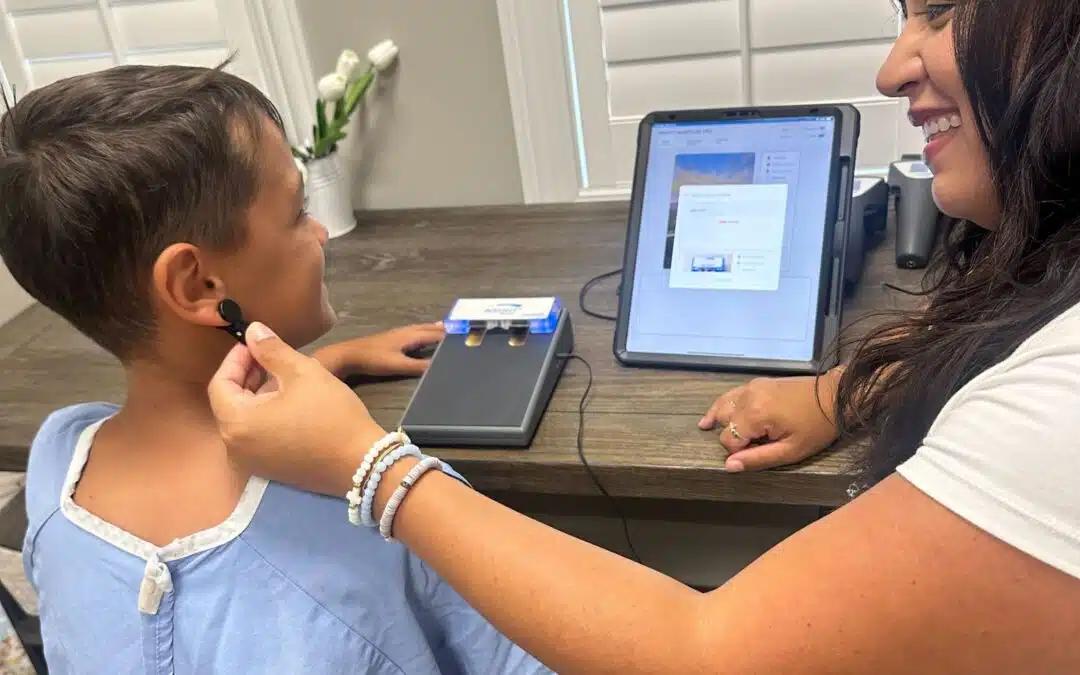Unfortunately, chronic stress, burnout, and exhaustion are not just for us parents. Today, more than ever, our teens and young adults are burnt out and exhausted as well, and struggling with their mental, emotional, and even physical health as a result.
The demands of school, sports, extracurricular activities, friends, relationships, social media, and family can all weigh heavily on teenagers, and many just aren’t as adaptable and resilient enough to handle it all and stay healthy through it.
Allye was a teen who struggled with severe anxiety and depression. Her parents experienced constant heartbreak witnessing her struggle, and Allye felt unheard and deeply hopeless. Despite trying various therapies, medications, and hospital admissions, she continued to battle the weight of mental health struggles.
The fact is the stressors they face as teenagers are not the only factors at play, but as you’ll learn in this article, our current “Perfect Storm” environment and lifestyle alters neurological and physiological development way early in life, leaving their brain and body already “wound up and worn out” before the tough teen years even hit.
Children who struggle with the “basics” of health and neurological development early on in life are more prone to stress and exhaustion later on in life because they simply aren’t built up strong enough to handle the demands that life throws at them as they get older.
If they struggle with things like colic, chronic ear infections, asthma, allergies, constipation, frequent stomach issues, chronic illness, sensory processing disorder, ADHD, and so forth early on in life, the teen years are going to be that much harder because their nervous system has already been through so much just to get there.

Wound Up Before Worn Out
The latest research and scientific understanding shows us that long before the later effects of chronic stress show up (depression, fatigue, exhaustion), the first step in the stress cycle is actually the opposite – being wound up, hyperactive, impulsive, and anxious.
We’ve been fortunate enough to take care of thousands of teenagers struggling with chronic mental and emotional health challenges like anxiety and depression, and nearly every single time when we dig deep into their entire health history, we see that this vicious cycle was actually first kicked into gear as far back as pregnancy, birth, and early childhood.
Studies like this one take our understanding of this neurophysiological process that leads to exhausted teens all the way back to pregnancy and tip us off to how important the development and function of something called the vagus nerve truly is. We now know that any altered development or even physical trauma to the vagus nerve during pregnancy, birth interventions, or early in a child’s development can lead to chronic challenges like autism, ADHD, and anxiety later in life.
The 3 Progressive Stages of Chronic Stress + Subluxation
Before burnout, exhaustion, and depression hit, these two stages of stress and subluxation show up:
- Sympathetic Fight or Flight Overload: tension, anxiety, and being “wound up” all the time
- Neurological Disorganization and Confusion: struggling to keep up with the demands of physiological health (digestion, immune, endocrine, physical), school and sports schedules, relationships and social pressures, technology, etc
Once those two elements of stress, subluxation, and nervous system dysregulation have been there long enough, the 3rd stage of burnout and neurological exhaustion is bound to show up soon enough. You can’t be stuck on the “gas pedal” for too long before you flat out run out of gas altogether.
Sadly, while this article’s title mentions teens, we now see this neurological exhaustion and signs of anxiety and depression at the highest rates ever, even in grade school kids. Because the current medical system and standard American lifestyle continue to get young kids more and more hooked on medications, processed foods, phones, and iPads earlier than ever, exhaustion and fatigue show up earlier than ever as well.
The 5 Signs of Burnout + Exhaustion in Teens Today
- Sleep, Gut, and Immune Health Challenges: if a child’s basic physiological functions are not working well, then it constantly wears out and exhausts the entire body, including the brain and autonomic nervous system, where mental and emotional health is regulated.
- Physical Pain, Posture, Headaches: no teenager should already be dealing with poor posture, neck, and back pain, headaches, or frequent injuries, as all of these would be a sign of neurological exhaustion already setting in.
- Irritability, Agitation, and Big Mood Swings: teenagers are just like adults in that when they are constantly tired, they are far more irritable and easily agitated. This is not just a “teenager thing” but is a sign of them being exhausted and out of balance when it becomes excessive.
- Mental and Emotional Dysregulation: impulsive behaviors, emotional instability, trouble with focusing and concentrating, and other similar challenges can be sure signs of neurological exhaustion and chronic stress.
- Poor Lifestyle Choices + Eating Habits: while we can’t always expect our teens to eat a perfectly clean and healthy diet, if they start to eat way too much or way too little, make super unhealthy choices, and so forth, these all can be signs of exhaustion setting in.
Lastly, for females, oftentimes, if they begin missing their period or have a very irregular period, that can be a sign of neurological imbalance and exhaustion as well. The nervous system controls every other major system of the body, especially the endocrine system, so dysfunction and challenges there can often be traced to a neurological dysfunction origin.
How Can Parents Help Their Teen Overcome Burnout?
Since we listed out 5 signs of burnout and exhaustion above, let’s combat them with a list of 5 incredibly helpful actions you can take to help restore energy, improve physiological health, and get your teen’s nervous system better regulated and back in balance once again. Our clinical care protocol for exhausted, anxious, and depressed teens looks like this:
- Neurologically-Focused Chiropractic Adjustments: while everything else that will make it on this list is wildly helpful for teens, too often they are so exhausted and out of balance that we need to deploy these specific kinds of adjustments that are more “potent” and can directly stimulate the autonomic nervous system, and specifically the vagus nerve. For exhausted teens getting the vagus nerve and parasympathetic system engaged and active again is the essential first step to building better health and momentum for teenagers to start to get better once again!
- Better Sleep: for patients of all ages and various health conditions, nearly every single time, the first direct effect of getting adjusted and under Neurologically-Focused Chiropractic Care is vast improvements in sleep. So often, our teen patients report they can now fall asleep easier, stay asleep all night, and finally feel like they’re getting deep, restful, energy boosting sleep.
- Improved Gut + Immune Health: there is a major connection between the gut and the brain, and the role the microbiome and immune system play in our mental and emotional health is huge. Put simply, if you constantly battle gut issues and get sick all the time, you’re not going to have a lot of energy and mental well-being either. No one feels great mentally and emotionally when constantly sick.
- Empowerment, Engagement, and Health Education: since we are NOT their parents, teens respond very well to us when we take the time to really get to know them, what they’re interested in and love doing, and what goals they’d go after and engage in if they had better health and more energy. This is so often a wildly effective first step in getting our teen patients to become interested in their health, and we take the time to teach them how the brain, nervous system, and body work and how much influence they have over their mental and emotional health by taking care of their physical health first.
- Connection + Collaborative Care with Other Health Professionals: while we can count on the adjustments and incredible care we provide in our office to get a teen’s health moving in the right direction, the moment they need additional support from a top medical professional, psychologist, or counselor, we’ve got an entire network of trusted providers who can step in and get our patients the level of care they need here!
Quite often, by the time we get a chance to step in and help a teen patient dealing with anxiety, exhaustion, depression, and so forth, they’ve already seen a host of medical providers and may be on one or more medications. Just like all serious health challenges, medical intervention can be life-saving and wildly helpful when used just right. That is why, in every single one of these cases, we encourage the family to continue to work with their medical provider to handle that side of things while we get to work on addressing the real root cause of these challenges, the neurological imbalances and dysfunctions.
Put simply, the medical theory of “chemical imbalances” being the cause of mental and emotional disorders in teens, they are getting close to understanding the full clinical picture of what’s going on. However, the “chemicals” they are discussing, like serotonin, dopamine, norepinephrine, noradrenaline, cortisol, and so forth, are what are called neurotransmitters. When you break that word down into parts, you can really quite simply see the real science behind these disorders more clearly than ever because they simply transmit messages for the “neuro” system – the central and autonomic nervous system.
Get Drug-Free Help For Your Teen Today
As Neurologically-Focused Family Chiropractors, we don’t chase symptoms or even secondary physiological markers. Instead, we work to address the real root cause and neurological imbalance in every single patient, no matter their condition or diagnosis. In today’s chronically stressed, toxic, and overwhelming world, it’s our teenagers who perhaps need this care more than anyone.
After discovering a PX Docs office, Allye’s mom described it as a “place of hope.” Allye felt heard and actively engaged in the care plan, and with consistent chiropractic care, she regained the sparkle in her eyes. Allye’s depression and anxiety transformed from overwhelming challenges into manageable aspects of her life, unlike what medication could achieve. Celebrating her improved anxiety management, Allye no longer relies on medications. Her family is grateful to be able to witness Allye’s promising and bright future due to her intelligence, spirited nature and sense of humor that are now able to shine through.
To learn more about how Neurologically-Focused Chiropractic Care may help your teen get more energy and back in balance, check out these incredible articles on our PX Docs Clinical Process and also the amazing cutting-edge technology we incorporate, called the INSiGHT Scans. These scans, especially HRV, help detect and measure the exact neurological imbalance and dysfunction that so often is at the core of teen burnout and exhaustion.





